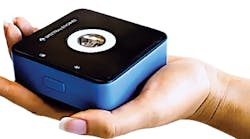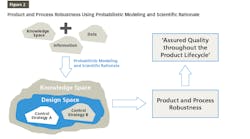Ever since the U.S. FDA embraced the idea of PAT (even prior to its 2002 Draft Guidance), many, including myself, have attempted to define exactly where PAT begins and ends in a Pharma process. My personal view is that EVERYTHING about the process of making and delivering a quality product is covered, including packaging.
At my first Pharma job in 1970, I was hired to determine, with methods I was supposed to devise, the interactions between pharmaceutical dosage forms and polymeric materials. The industry was moving to distributing drugs in plastic bottles, not knowing what kinds of polymers to use, how thick the walls, or what shape the bottles should be, and what additives were safe or could protect the polymers.
I was guided by regulators to use “best scientific judgment” (cGMPs were not yet in effect) to measure interactions. Vapor transmission (both water and organic solvents) was one simple test, followed by light transmission (adding TiO2 wasn’t for esthetics), shoulder angles (to avoid chipping or cracking during filling), and cap tightness. We also needed to see what went into and is extracted from the polymer; plastics were suggested to save money and improve safety. A plastic dropper for nose drops was chosen. After initial success with testing, it was decided that the dropper could be packaged in the bottle. Eureka! We had a smaller and lighter package — what could possibly go wrong?
Well, no one thought of testing the preservative (thimerosal) over time with the dropper in the bottle. As it turns out, thimerosal went into the plastic rather rapidly at room temperature. So after using the dropper and inserting it back into the bottle, the remaining solution became a petri dish for cold “germs.” Another instance involved hand cream. The bottle’s PVC antioxidant was tetraethyl zinc … which migrated into the cream over time and ultimately killed the product.
Though this was happening in the ’70s, as recently as two years ago a major Pharma company was forced to recall its products because of “an organic odor.” It was discovered that the wooden pallets the bottles were stored on emitted fumes from the preservatives used on them. These emissions permeated the bottles and “adulterated” the products. Unfortunately, the company also had a spate of recalls for shipping mislabeled batches of product, all of which finally brings us to what PAT can bring to the packaging party.
It seems that even a company with a thriving PAT program (i.e., well monitored and documented) can make some false assumptions. At one outfit, we had labels specially made for high humidity climates with “heat seal” mucilage and “wet seal” for dry climates; on several occasions these were mixed, ultimately causing the batch to be rebottled. Another case involved a bi-layer polymer that was heat-sealed to the base of a blister pack. We found that if the polymer is wound on the roll upside down, the polymer will melt onto the heated roller that seals capsules to the packs. What a mess.
Such problems may be obviated by simply conducting a last-minute check in the packaging area. A small NIR or Raman unit could determine the ID and potency of a product, as well as to ascertain that the plastic sealing material is correct. That simple step brings packaging into the PAT paradigm of the company.
Keeping sterility is a major problem when packaging liquids, since the drug product is a solution and by definition, homogeneous, confirming content uniformity is generally a matter of weighing the containers. One interesting approach is Blow Fill Seal (BFS) technology, often used for volumes from 0.1mL to >500mL.
If you are not familiar, the basic concept of BFS is that a container is formed, filled and sealed in a continuous process without human intervention, in a sterile area inside the machine. BFS reduces personnel intervention making it a more robust method for the aseptic preparation of sterile pharmaceuticals. Generally, the containers are polyethylene (PS) and polypropylene (PP). PP is more commonly used to form containers which are further sterilized by autoclaving as it has greater thermostability. Notably, the plastic containers can be easily checked with a Raman monitor, thus allowing them to remain sealed and sterile.




